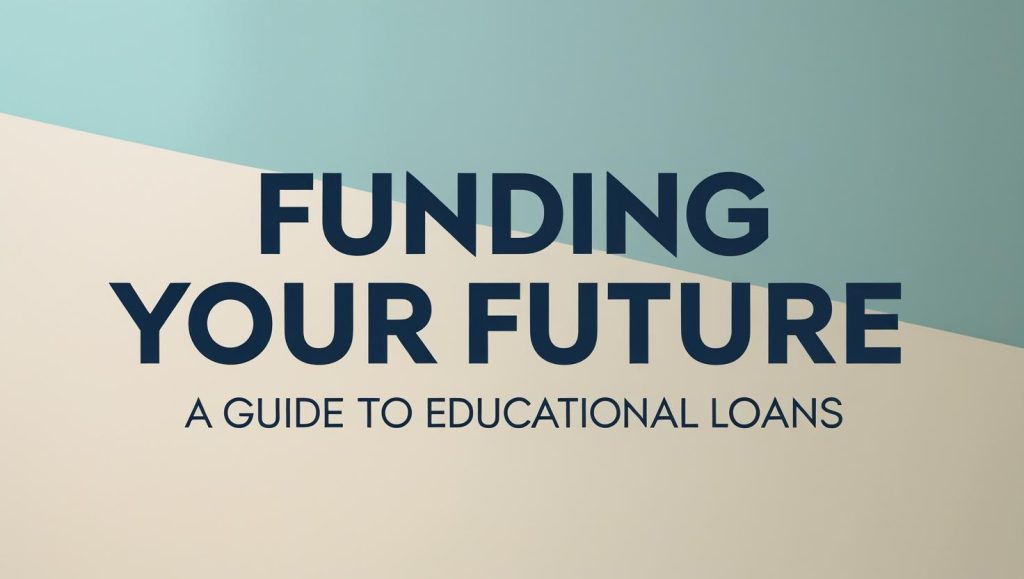
FUNDING YOUR FUTURE: A GUIDE TO EDUCATIONAL LOANS
Pursuing higher education can be a costly endeavor, but educational loans can provide the necessary financial support to help students achieve their academic and career goals. At VALDYMAS ENTREPRENEURIAL AND TRANSFORMATIONAL LEADERSHIP EMPOWERMENT PROGRAM ( VETLEP ) we will explain to you the different types of educational loans available, their benefits, and tips for borrowing responsibly.
TYPES OF EDUCATIONAL LOANS
- Federal Student Loans:Government-backed loans with favorable terms, such as low interest rates and flexible repayment options. These loans are available to undergraduate and graduate students, and include Direct Subsidized and Unsubsidized Loans, as well as Federal Perkins Loans (U.S. Department of Education, n.d.).
- Private Student Loans:Loans offered by banks, credit unions, and other private lenders, often with variable interest rates and less flexible repayment terms. These loans can be used to cover educational expenses not covered by federal loans or other financial aid(College Board, n.d.).
- International Student Loans:Loans designed for international students studying in the United States or abroad, often requiring a co-signer. These loans provide financial support for international students to pursue higher education in the United States or other countries (MPOWER Financing, n.d.).
BENEFITS OF EDUCATIONAL LOANS
- Access to Higher Education:Educational loans can help students pursue higher education, even if they lack the financial resources. This can lead to better job prospects, higher salaries, and greater career advancement opportunities(Baum & Schwartz, 2011).
- Career Advancement:Higher education can lead to better job prospects, higher salaries, and greater career advancement opportunities. Studies have shown that individuals with higher education degrees tend to have lower unemployment rates and higher earning potential (Heckman et al., 2018).
- Increased Earning Potential:Studies have shown that individuals with higher education degrees tend to earn more than those without. In fact, according to the U.S. Bureau of Labor Statistics, workers with a bachelor’s degree typically earn about 50% more than those with only a high school diploma (U.S. Bureau of Labor Statistics, 2022).
TIPS FOR BORROWING RESPONSIBLY
- Understand the Terms:Carefully review the loan terms, including interest rates, repayment options, and fees. This can help borrowers make informed decisions about their financial aid options (Federal Student Aid, n.d.).
- Borrow Only What’s Necessary:Borrow only the amount needed to cover educational expenses, avoiding unnecessary debt. This can help borrowers manage their debt and avoid financial difficulties after graduation(College Board, n.d.).
- Explore Forgiveness Options:Research loan forgiveness programs, such as Public Service Loan Forgiveness (PSLF), which can help borrowers manage their debt. These programs c
ADDITIONAL TIPS FOR MANAGING EDUCATIONAL LOANS
- Create a Budget:Develop a budget that includes loan payments, living expenses, and other financial obligations. This can help borrowers manage their finances and avoid financial difficulties (National Endowment for Financial Education, n.d.).
- Prioritize Debt Repayment:Prioritize debt repayment, focusing on high-interest loans first. This can help borrowers save money on interest and pay off their loans more quickly (Financial Industry Regulatory Authority, n.d.).
- Consider Consolidation:Consider consolidating loans to simplify repayment and potentially lower interest rates. This can help borrowers manage their debt and avoid financial difficulties(Federal Student Aid, n.d.).
Conclusion
Educational loans can be a valuable resource for students pursuing higher education. By understanding the different types of loans available, their benefits, and tips for borrowing responsibly, students can make informed decisions about their financial aid options. With careful planning and responsible borrowing, students can achieve their academic and career goals while managing their debt.
References
- Baum, S., & Schwartz, S. (2011). Paying for college:A guide for parents. Journal of College Admission, (211), 22-29.
- College Board. (n.d.). Private student loans.
- Federal Student Aid. (n.d.). Understanding student loans.
- Heckman, J. J., Humphries, J. E., & Kautz, T. (2018).The importance of soft skills in the labor market. Journal of Economic Perspectives, 32(4), 73-96.
- MPOWER Financing. (n.d.). International student loans.
- National Endowment for Financial Education. (n.d.). Budgeting.



